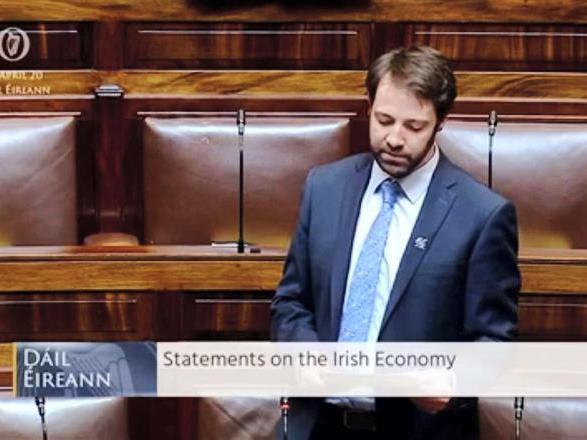Green Party TD and chair of the Oireachtas Climate Committee Brian Leddin has accused the Teagasc position on biogenic methane of being “misleading”.
Biogenic methane is a greenhouse gas emitted largely through the belching of cows and makes of a large part of emissions in Ireland. As targets are due to be set in the upcoming climate bill, Teagasc has argued for a separate target for biogenic methane emitted from the agriculture sector, pointing to the fact it has a shorter life cycle than carbon dioxide.
Quite a different greenhouse gas
During the committee, director of Teagasc Gerry Boyle said it is “quite a different greenhouse gas”.
He also said that that if the agriculture sector was required to reduce emission by 51% in line with the overall Government target by 2030, it “would have a hugely negative impact on the activities in the agriculture sector”.
‘Misleading’
However, deputy Leddin did not agree with the Teagasc director and said that he wanted to take up the issue of biogenic methane as what Teagasc had said was “quite misleading”.
He pointed out that methane whether it was fossil derived or from agriculture still had a warming effect on the atmosphere despite having a shorter life cycle.
“Methane, from whatever source, needs to be reduced,” Leddin said.
He added that climate change was an international threat that that industrial farming “like we have in Ireland” needed to step up to meet climate commitments.
Molecules of methane
In response, Professor Frank O’Mara of Teagasc acknowledges the TD’s points.
“A molecule of methane is the same as a molecule of methane wherever it comes from,” he said.
But added that the reason why so much focus was being put on methane from agriculture was that it was part of a life cycle where carbon dioxide was removed from the atmosphere by grass that was grown to support grazing livestock.
If herd numbers rose it would be a problem
He acknowledged it was a complicated subject and one that further research was being carried out on.
“We weren’t trying to say that it [biogenic methane] didn’t have an impact,” O’Hara said in defence of Teagasc.
He went on to say that if herd numbers rose it would be a problem as biogenic methane levels would also rise causing a heating effect in the atmosphere and that was why so much emphasis was being put on stabilising herd numbers.
‘Under ambitious’ organics
Teagasc were also taken to task over what Sinn Féin TD Matt Carthy called their “under ambitious” target for the organic sector. They outlined a goal of 10% of all farmland in country being organic by 2030.
Deputy Carthy said that this was not enough given the emphasis that had been put to increase organic land under the EU’s Farm to Fork Strategy.
However, the Teagasc director responded that given that reaching 10% by 2030 would be doubling the current organic land in Ireland and that it was important to keep targets realistic.
He acknowledged that Teagasc did need to support the sector and that this should include the development of demonstration farms.






 This is a subscriber-only article
This is a subscriber-only article










SHARING OPTIONS: